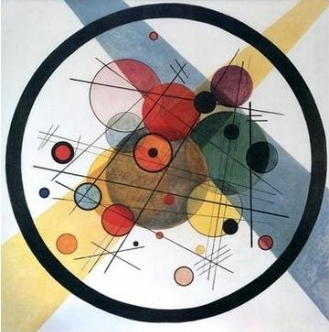
|
|
| Purpose | Participants | Meetings | Publications | Calls | Reports | Private | Contact |

|
|
Results
This project was protected by a confidentiality clause that remains valid and prevents us from disclosing a majority of the information relative to the activities that were conducted. There is however some information we can provide and which we present here.
The current project crucially depended on having data from interchromosomal contacts, either those from the techniques already in use, notably 3C ([1], [2]), 4C ([3], [4]) and 5C ([5]), or data produced with the new techniques the biologist partner of the project was developing. This however is a slow and painstaking process, and indeed a crucial part of our work in this project has been to participate in the design of the new experimental techniques that should enable us to obtain more accurate and possibly more abundant data. On this aspect, we cannot say more than this on this publicly available report apart from the fact that work is progressing at a reasonable pace and is giving satisfaction to the biological partner. The big surprise concerning data already used in the literature (see references above), is that despite all our efforts, we were unable to obtain them from the authors we contacted. We did get some data concerning the work published in [2] as those were part of a patent established by the authors. The patent however was made available, or we were able to obtain it only in late 2008, and it contains just a dataset so small that it makes no sense to study its correlation with other features of a genome organisation, notably with the breakpoint regions detected by the method developed in parallel with this project ([6]). We continue exploring other possibly existing datasets, and currently have one other lead that we are following.
We had in mind working also with simulated data, and indeed, this revealed itself to be critically important to help guide the experimental set up for the data we want to obtain ourselves over the next years. This is not a trivial matter as it involves simulating artificial chromosomes in artificial cells. Biological knowledge is important but not sufficient. Work on this got however a great boost around the Spring of 2008 when we met a physicist, Mario Nicodemi from both the University of Naples in Italy and the University of Warwick in the UK. A first meeting of the UK and French partners of the project was organised with Mario in the Summer of 2008 at Lyon (see Meetings page), and a collaboration was started on first simulating the 4 and 5C type of data under various conditions to evaluate the capacity of the already existing related techniques to represent specific chromosomal 3D contacts. This work is in good progress and a paper is anticipated for 2009.
In order to enable the postdoc recruited on the project to obtain some results, besides those with the simulation indicated above and that she is currently conducting, we also decided to get ahead with the development of methods for analysing correlations between genome dynamic and biochemical networks. We needed publicly available data to test our progress, and had as a consequence to shift the context to another organism and a different issue. The organism we chose was the paramecium, and the context that of the relation between temporal genomic dynamic and metabolism. More precisely, we are investigating the impact on its metabolic network of the (at least) three whole genome duplications the paramecium genome underwent. This work is in progress and should also lead to a publication.
In summary, during the two years of the project, we concentrated on three main issues:
Future
Despite the frustration to see that data in the literature is not freely available as we had initially expected which has hampered progress on the project, the collaborations set up have been immensely enriching and have encouraged us to pursue full speed with the work started. This remains certainly a very high risk project but one we do believe is fully worth taking, for the biologist of course, but also for the computational and mathematical partners. In terms of funds, the idea is therefore to continue in the next months with those we have currently available from other sources (recurrent or from other projects that may be linked at least partly with this one), and to submit a new demand to a French and/or European program with the lessons learned in the first two years. Our plan of work for the immediate future is to:
[1] Dekker, J, Rippe, K, Dekker, M, Kleckner, N (2002) Capturing chromosome conformation. Science
295: 1306-1311
[2] Dekker, J (2006) The three 'C' s of chromosome conformation capture: controls, controls, controls. Nat
Methods 3: 17-21
[3]
Zhao, Z, Tavoosidana, G, Sjölinder, M, Göndör, A, Mariano, P, Wang, S, Kanduri, C, Lezcano, M,
Sandhu, KS, Singh, U, Pant, V, Tiwari, V, Kurukuti, S, Ohlsson, R (2006) Circular chromosome
conformation capture (4C) uncovers extensive networks of
epigenetically regulated intra- and inter-chromosomal
interactions. Nat Genet 38: 1341-1347
[4] Simonis, M, Klous, P, Splinter, E, Moshkin, Y, Willemsen, R, de Wit, E, van Steensel, B, de Laat, W
(2006) Nuclear organization of active and inactive chromatin domains uncovered by chromosome
conformation capture-on-chip (4C). Nat Genet 38: 1348-1354
[5]
Dostie, J, Richmond, TA, Arnaout, RA, Selzer, RR, Lee, WL, Honan, TA, Rubio, ED, Krumm, A,
Lamb, J, Nusbaum, C, Green, RD, Dekker, J (2006) Chromosome Conformation Capture Car-
bon Copy (5C): a massively parallel solution for mapping interactions between genomic elements.
Genome Res 16: 1299-1309
[6]
Lemaitre C, Tannier E, Gautier C, Sagot MF (2008) Precise detection of
rearrangement breakpoints in mammalian chromosomes. BMC
Bioinformatics, 9: 286-322